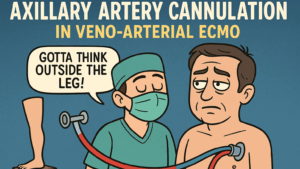In cardiac surgery, the choice of cardioplegic solution can significantly influence both myocardial protection and the risk of postoperative complications, such as acute kidney injury (AKI). This experimental study titled “Comparable Renal Effects of Histidine-Tryptophan-Ketoglutarate and DelNido Cardioplegia in a Porcine Model of Cardiac Arrest”, published in Renal Failure (2025), investigates the comparative renal effects of two widely used cardioplegic agents—Histidine-Tryptophan-Ketoglutarate (HTK) and DelNido cardioplegia—in a large animal model.
Cardiac surgery-induced AKI is a frequent and severe complication, affecting up to 30% of patients, with 2–6% requiring dialysis. While cardioplegia is designed to arrest the heart and protect myocardial tissue during surgery, its systemic effects—particularly on the kidneys—are less frequently studied. In this randomized porcine study, researchers from the University Clinic of Cardiac Surgery, Leipzig, assessed how HTK and DelNido solutions influence renal histology, oxidative stress, apoptosis, and urinary AKI biomarkers during and after 90 minutes of induced cardiac arrest and 120 minutes of reperfusion.
A total of 18 female landrace pigs (50–60 kg) were used. The animals were randomized into two groups, receiving either a single dose of HTK or Jonosteril-based DelNido cardioplegia. Key differences between the solutions include HTK being a crystalloid solution rich in histidine, tryptophan, and α-ketoglutarate, while DelNido incorporates porcine blood and lidocaine, offering more physiologic ionic composition. The surgical procedure involved standard cardiopulmonary bypass (CPB) at 34°C, followed by 90 minutes of induced cardiac arrest and a reperfusion period of 120 minutes.
While DelNido cardioplegia induced fewer disturbances in blood electrolytes—especially sodium, chloride, and calcium—and maintained hemoglobin levels better than HTK during aortic cross-clamping, both solutions resulted in similar renal outcomes. The measured AKI biomarkers—L-type fatty acid-binding protein 1 (FABP-1), neutrophil gelatinase-associated lipocalin (NGAL), and cystatin C—showed no statistically significant differences postoperatively. Histomorphological evaluations, such as glomerular size, proximal tubule cell height, and tubular diameters, also did not differ between the groups.
Importantly, markers of oxidative stress—including enzyme activities of NADPH oxidase (NOX), superoxide dismutase (SOD), and catalase—were found to be comparable. Additionally, both HTK and DelNido groups showed similarly elevated levels of nitrotyrosine expression, suggesting similar levels of nitrosative stress. The nuclear translocation of hypoxia-inducible factor 1-alpha (HIF-1α) and pro-apoptotic apoptosis-inducing factor (AIF), alongside cytosolic cytochrome C levels, further supported the conclusion of equivalent renal cellular responses between the two cardioplegic methods.
One of the notable findings is that DelNido cardioplegia induced less hemodilution and minimized electrolyte imbalances compared to HTK. These benefits can be particularly important for high-risk cardiac patients undergoing complex or prolonged surgical procedures. However, within the study’s constraints—healthy animals, a 120-minute reperfusion period, and controlled conditions—these differences in systemic responses did not translate into measurable differences in renal injury.
The authors acknowledge several limitations, including the short reperfusion period, small sample size, and the use of healthy female pigs, which may not fully replicate the comorbidities and pathophysiological variability seen in human cardiac surgery patients. Female sex itself is considered a potential risk factor for cardiac-surgery-associated AKI, which might influence outcomes. Moreover, the short-term study design limited the assessment of long-term renal recovery or progression to chronic kidney disease. Future studies should investigate the renal effects of cardioplegic solutions over extended periods (3–5 days or weeks) and include aged or comorbid animal models.
Despite these limitations, the study reinforces the idea that both HTK and DelNido cardioplegia can be considered safe in terms of renal effects in cardiac surgery involving up to 90 minutes of cardiac arrest. While DelNido may offer practical advantages due to reduced volume, shorter administration times, and fewer disturbances in hemoglobin and electrolytes, these did not result in superior renal protection in the controlled setting of this experiment.
In conclusion, this robust animal study adds valuable evidence to the ongoing clinical debate regarding optimal cardioplegia. While DelNido showed systemic physiological advantages during surgery, its renal impact was comparable to HTK, making both viable choices depending on patient-specific surgical needs. These findings have direct implications for clinicians managing high-risk cardiac surgical patients, guiding the choice of cardioplegic solution to balance myocardial protection with systemic safety.







